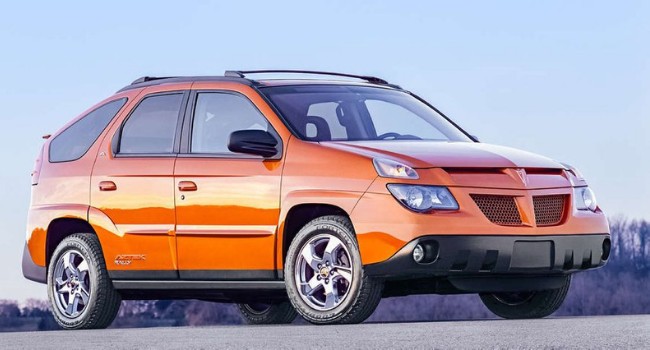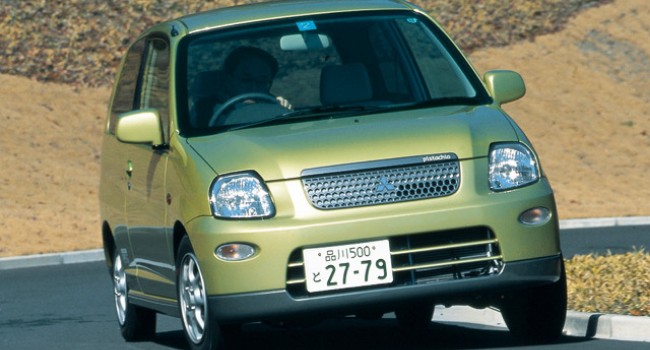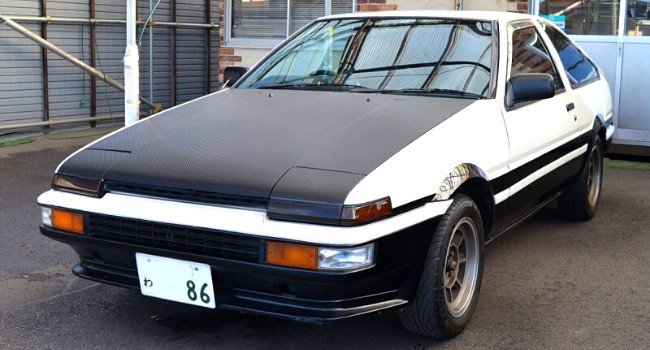What’s in a Car Name?
Car names are hugely important to not only the brand they represent but also the longevity of a model itself.
If a model doesn’t sell, the name will fade away. On the other hand, a popular name that everyone knows and trusts will have decades of spin-offs and trim levels.
For example;
Toyota Corolla: 12 generations, 55 years, over 44 million sales
Land Rover Range Rover: 4 generations, 51 years, 3 extended line models (Sport, Evoke, Velar)
Volkswagen Beetle: dozens of variants and trim levels, movies, toys and even motorsport success over 65 years.
On the other hand;
Lincoln Blackwood: with only two model years (2002 and 2003), the Blackwood aimed to be a luxury ute (pickup truck). Discontinued due to poor sales.
Pontiac Aztek: discontinued due to poor sales caused by controversial design (2000 - 2005).

(The Pontiac Aztek)
But, let's go back to how car names are chosen
Manufacturers work with their marketing teams to come up with car names. The idea is to convey the image of the name to the demographic the vehicle is aimed at. This can include lifestyles, geographical locations and age ranges.
During brainstorming sessions, a lot is taken into consideration.
Trademarks
Avoiding lawsuits is a must when it comes to car names or any product. Research into markets where the vehicle is to be sold knocks out or even adds car names.
For example, the Toyota Kluger. The popular SUV is known as a Highlander in North American markets. Due to the ‘Highlander’ name being trademarked as a Hyundai Terracan trim level in Japan and Australia, we know it as a Kluger.
Problem
With so many car names being trademarked, manufacturers can struggle with consistency. This can cause problems with advertising and general marketing. Using the example above, ‘Kluger’ means ‘smarter’ in German which has nothing to do with the imagery that ‘Highlander’ provokes.
Solution
Often, manufacturers stick with similar concepts or themes. Again, using Toyota as an example, it’s easy to spot a theme with some vehicles;
- Corolla = ‘little crown’ in Latin
- Camry = ‘crown’ in Japanese
- Celica = ‘heavenly’ in Spanish
Volkswagen is another example with the theme being winds or weather patterns;
- Golf = Gulf Stream, the Atlantic ocean current, not the sport
- Passat = ‘trade wind’ in German
- Polo = polar winds, not the sport
- Jetta = ‘jet stream’ in German
- Sirocco = a Mediterranean wind
Translations
When selling vehicles in different countries, manufacturers have to be careful with car names. Although car names are typically spoken as borrowed words, for example, the Volkswagen names listed above, some have double meanings.
For example;
- Holden Nova. ‘Nova’ sounds similar to ‘doesn’t work’ or ‘no go’ in Spanish.
- Lamborghini Reventón. ‘Reventón’ means ‘blowout’ (flat tyre) in Spanish.
- Nissan Gloria and Cedric. These two sedans don’t have appealing names for English-speaking markets.
To get around this today is not as much of a problem with the power of online tools like Google Translate. It was much more difficult prior to the internet.
The Studebaker Dictator from the 1920s and the 1975 AMC Gremlin are examples.
Sometimes, car names remain in their respective markets as manufacturers know the names won’t produce sales elsewhere.
Some interesting car names not introduced in Australia.
- Mitsubishi Minica Lettuce (1962 - 2011) - also called a Mitsubishi Towny.
- Mitsubishi Pistachio (1999) - very rare vehicle, reporting only 50 sold in Japan.
- Isuzu Mysterious Utility Wizard (1989 - 2004). This vehicle was a predecessor to the popular Isuzu MU-X which explains where the ‘MU’ in the name originated from.
- Subaru BRAT (1978 - 1994). BRAT stood for "Bi-drive Recreational All-terrain Transporter". This ute sold as the Subaru Brumby in Australia.

(A rare Mitsubishi Pistachio. Source: carsensor.net)
Some Manufacturers Avoid the Risk Completely
Using a series of letters and/or numbers works well when trying to avoid names that don’t translate well. Mercedes is a good example of this. The brand often uses alphanumeric names for their cars or keeps it simple with ‘Class’.
- The SLK
- A-Class Hatchback
- B-Class Hatchback
- A-Class Sedan
- C-Class Sedan
- E-Class Sedan
- S-Class Saloon
- CLA Coupé
- CLS Coupé
- EQC SUV
- GLE SUV
Lexus is another: The LS, GS, ES, IS, SC, LX, GX and RX.
Volvo: S40, S60, S80, V50, V70, XC70, XC90, C30 and C70.
There are many.
The problem is that it’s difficult for consumers to remember these letters and numbers and associate them with specific cars. This is especially true when first launched. Marketing teams are tasked with ensuring consumers remember and resonate with, for example, an XC70.
On the plus side, as well as avoiding translation problems, marketing on an international scale is an easy job.
Some brands get around this by using a trim level or variant previously associated with a word. For example, the famous Nissan GT-R and Subaru WRX. Anyone even slightly interested in cars knows these two popular vehicles.
The GT-R was, for years, a high-performance variant of the Nissan Skyline. Rising to fame in the 1990s, Nissan’s Skyline GT-R dropped the ‘Skyline’ in its 2007 relaunch, now known as the Nissan GT-R.
The Subaru Impreza WRX is typically known as the WRX.
What do all these letters and numbers mean?
Below are some meanings;
- Nissan GT-R - Gran Turismo Racer / Racing
- Subaru WRX - World Rally eXperimental
- Ferrari GTO - Gran Turismo Omologato
- Honda NSX - New Sportscar eXperimental
- Honda CRX - Civic Renaissance eXperimental
- Mitsubishi ASX - Active Sports (X = Crossover)
- Mazda RX-7 - Rotary eXperiment #7
- Subaru BRZ - Boxer engine Rear-wheel drive Zenith
- Toyota MR2 - Mid-engine / Mid-ship Rear-wheel drive 2-seater
- Toyota 86 - Reference to the brand’s famous RWD sports coupes of the 1980s.
- VW Golf GTI - Grand Touring Injection

Did you know? The famous Porsche 911 launched in 1964, a full 4 years before the American emergency phone number. The sportscar was originally called the ‘901’ as per the assembly plant designation. French automaker, Peugeot, had trademarked ‘all three-digit car model numbers that had a zero in the middle’ so Porsche added a ‘1’ in the middle.
What’s in a name?
Consumers have come to accept confusing alphanumeric car names - online resources have helped. Data shows that 78% of shoppers use third-party sites to research vehicles online. This means less of a need to remember names like Mustang, Skyline, Supra, Thunderbird and so on as the internet is here to help.
Whatever the name of the vehicles you’re looking at getting into, Positive is here to help.
Get pre-approved today and start car shopping sooner with our quick and simple process.
